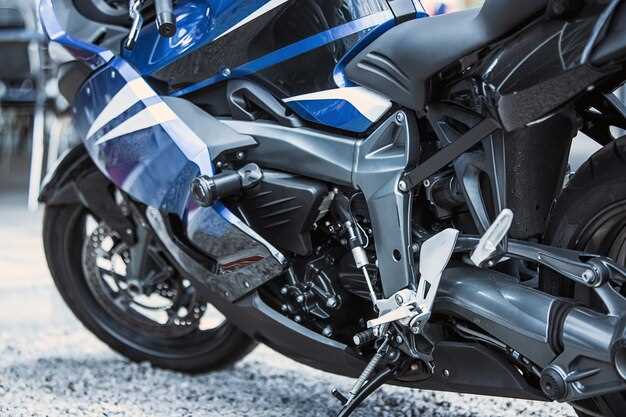

Adjusting the suspension height of your motorcycle is a critical step in optimizing both performance and comfort. Whether you’re a seasoned rider or a beginner, understanding how to tailor your suspension can greatly enhance your riding experience. The correct suspension height ensures better handling, increased stability, and improved cornering capabilities, which are essential for achieving that smooth ride.
Factors such as your weight, riding style, and the type of terrain you frequently encounter all play a significant role in determining the optimal suspension height. Customizing your suspension settings not only accommodates these variables but also allows for more precise control over your motorcycle’s dynamics. This article aims to provide you with the essential tips and insights needed to effectively adjust your motorcycle suspension height.
Before diving into the adjustments, it’s important to familiarize yourself with your bike’s suspension system. Understanding the basics, including preload, compression, and rebound settings, will empower you to make informed decisions. By following these guidelines, you’ll be well-equipped to enhance your ride and ensure your motorcycle performs at its best, regardless of the conditions.
Understanding Suspension Components and Their Functions
The motorcycle suspension system comprises several key components that work together to maintain stability, comfort, and control while riding. Each part plays a specific role in how the motorcycle handles different terrains, impacts, and rider inputs.
One of the primary components is the fork, located at the front of the motorcycle. It consists of two tubes that house the springs and dampers. The fork absorbs shocks from the road and helps keep the front wheel in contact with the surface, enhancing steering control and stability.
The rear shock absorber is another crucial element. It is designed to dampen the oscillations caused by the rear wheel’s movement over bumps. By controlling the rebound and compression, the rear shock ensures that the motorcycle remains stable and prevents it from bouncing excessively after hitting an obstacle.
Springs are vital in both front and rear suspension systems. They support the weight of the motorcycle and the rider, allowing for travel when hitting bumps or potholes. The spring rate, which determines how stiff or soft the springs are, significantly affects ride quality and handling.
Dampers, often integrated into forks and shock absorbers, regulate the speed of suspension movement. They prevent rapid oscillation and provide a controlled response during dynamic riding conditions, enhancing comfort and safety.
Adjustable components within the suspension system allow riders to tailor settings according to their preferences and riding conditions. Adjusting preload changes the ride height and firmness, while adjusting compression and rebound affects how quickly the suspension reacts to bumps and how it rebounds after compression.
Understanding these components and their functions is essential for effective suspension tuning. By making appropriate adjustments, riders can improve handling, increase comfort, and ensure a safer riding experience on various road conditions.
Step-by-Step Guide to Adjusting Your Suspension Height

Adjusting your motorcycle suspension height can greatly improve your riding experience, handling, and comfort. Follow this step-by-step guide to ensure a successful adjustment.
1. Gather Necessary Tools: Before starting, collect all required tools. You will need a torque wrench, allen keys, a jack or stand, and a measuring tape for accurate height adjustments.
2. Prepare Your Motorcycle: Park your motorcycle on a flat, even surface. Use a stand to lift the bike securely so that the wheels are off the ground. This ensures you have a stable working area and prevents any weight from affecting the suspension during adjustments.
3. Measure Current Suspension Height: Use a measuring tape to determine the current height of your motorcycle’s suspension. Measure from the ground to a specific point on the bike, such as the axle or seat height. Note down these figures for comparison.
4. Identify Adjustment Points: Consult your motorcycle’s manual to locate the height adjustment points. These may include preload settings on the front forks or rear shock, as well as any necessary adjustments to linkage or ride height adjustment bolts.
5. Make Initial Adjustments: Start with the rear suspension. If your motorcycle has a preload adjustment, use the appropriate tool to increase or decrease the preload. For the front forks, you may need to adjust the compression or rebound settings based on your desired height.
6. Re-check Measurements: After making adjustments, measure the suspension height again. Compare this new measurement with your initial figures to see if you have achieved the desired height. Make any fine adjustments as needed.
7. Test Ride: After completing the adjustments, take your motorcycle for a test ride. Pay close attention to how it handles differences in cornering, braking, and straight-line stability. This real-world feedback is essential for assessing whether further adjustments are necessary.
8. Repeat if Necessary: If you feel the need for further height adjustments, repeat the above steps. Fine-tuning may take several attempts to find the optimal suspension height for your riding style and preferences.
9. Document Changes: Once you are satisfied with the adjustments, document the changes you made. Keeping a record of your settings helps track adjustments over time and allows for easier modifications in the future.
Following this step-by-step guide will help you effectively adjust the suspension height of your motorcycle, enhancing both performance and comfort on the road.
Common Mistakes to Avoid When Modifying Suspension Settings

When adjusting your motorcycle’s suspension height, certain common mistakes can negate the benefits of your modifications or even worsen your ride. Here are key pitfalls to avoid.
One frequent mistake is making drastic changes in a single adjustment. Suspension systems require fine-tuning; significant alterations can lead to unbalanced handling. Instead, make incremental adjustments and test the bike’s performance after each change to find the optimal setup.
Another common error is neglecting to consider rider weight and gear. Suspension settings should be tailored to accommodate both the rider’s weight and any additional load, such as saddlebags or a passenger. Ignoring this factor can lead to excessive sag or stiff ride quality, affecting stability and comfort.
Failing to consult your motorcycle’s manual or seek advice from experienced riders can also create issues. Each motorcycle is designed with specific suspension characteristics in mind, and understanding these is crucial to achieving the desired performance. Researching and following manufacturer recommendations can prevent costly mistakes.
Moreover, many riders forget to regularly check and maintain their suspension components. Over time, seals can wear out, and fluid can degrade, leading to inconsistent performance. Regular maintenance ensures that adjustments yield the best results and prolongs the life of the suspension system.
Lastly, don’t overlook the importance of test riding after adjustments. Every motorcycle behaves differently, and personal preference plays a significant role in suspension feel. Failing to conduct test rides can lead to settings that may look good on paper but feel off in practice. Always take the time to evaluate and fine-tune your adjustments based on real-world riding experience.






